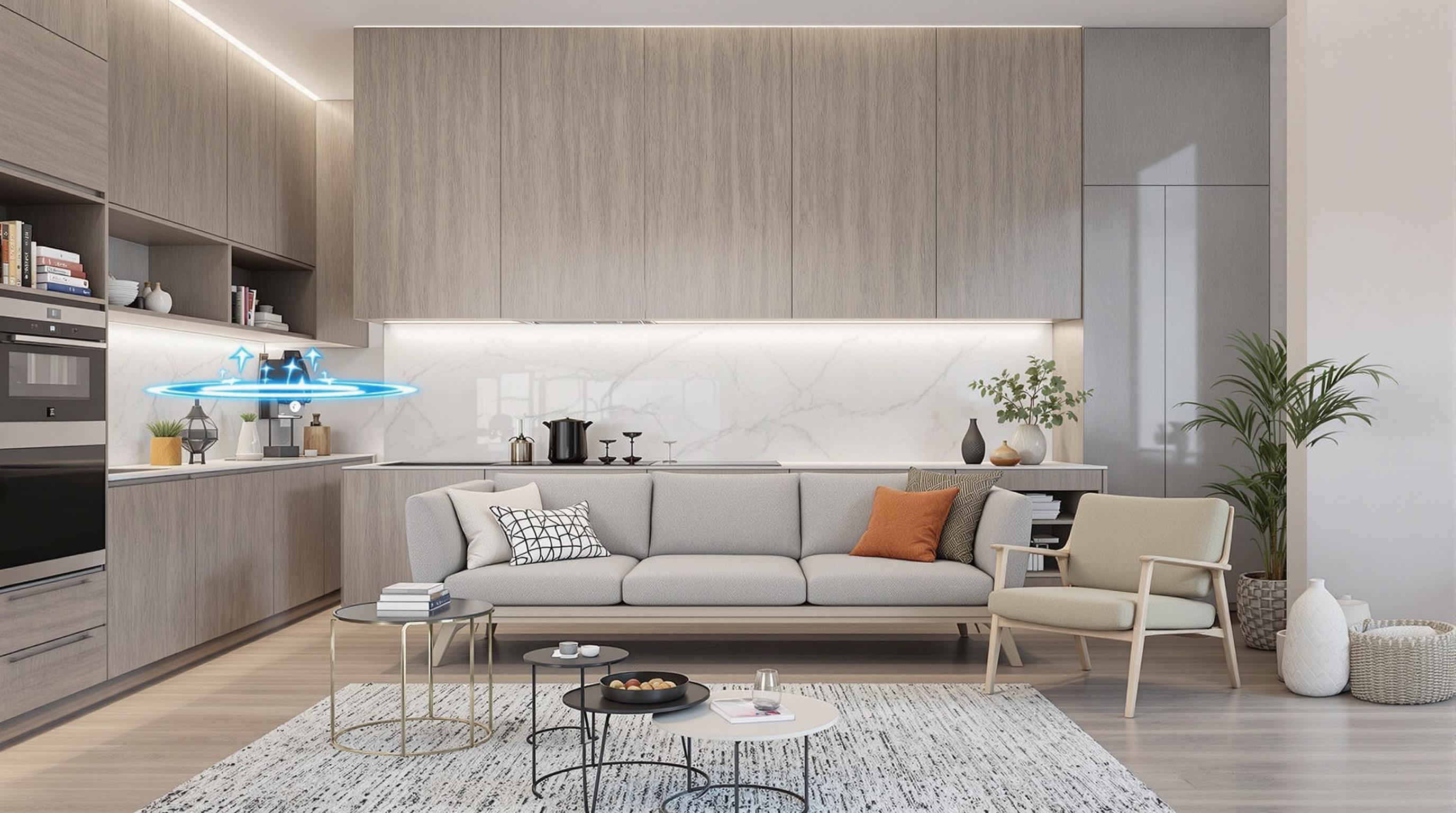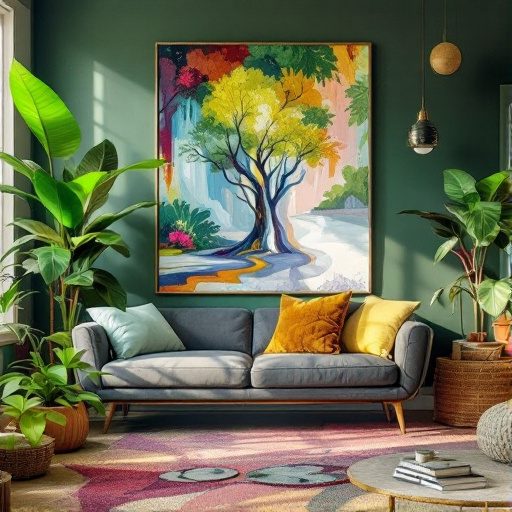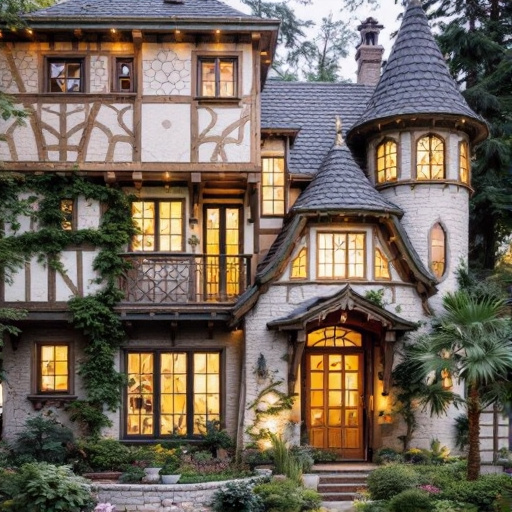Featured Articles
- "Decoding the Mystery: How Folklore Influences Modern Home Designs in Unexpected Ways"
- Reimagining Ruins: How Abandoned Spaces Are Inspiring Modern Home Designs and Eco-Conscious Living
- Reimagining Spaces: How Biophilic Design Can Transform Mental Health in Your Home
- Reviving the Past: How Retro Futurism is Reshaping Modern Home Design with a Twist of Nostalgia
- Revolutionizing Spaces: How Biophilic Design is Transforming Urban Home Environments into Nature-Infused Sanctuaries
Whimsical Designs: How Quirky Architecture Shapes Our Emotional Well-being at Home
Whimsical Designs: How Quirky Architecture Shapes Our Emotional Well-being at Home
Whimsical designs in architecture can greatly influence our emotional well-being at home, offering a unique blend of aesthetic appeal and psychological comfort. By exploring how quirky architecture shapes our daily lives, we can appreciate the profound connection between our living environments and our emotional states.
The Emotional Tapestry of Home
Home is where the heart is, or rather, where our emotions intertwine with our surroundings. A study conducted by the American Psychological Association found that our environment can significantly influence mood, creativity, and even productivity. Who knew that a splash of color on the walls or an unexpected curve in the staircase could uplift our spirits? A home filled with unique architecture and designs can create an emotional tapestry that comforts and inspires.
The Science Behind Whimsy
According to a 2018 report by the Global Wellness Institute, humans spend an average of 90% of their time indoors. This statistic emphasizes the importance of investing in environments that not only fulfill practical needs but also nurture our psyches. Quirky architectural elements—be it a fun, asymmetrical roof or a playful pop of color—can evoke joy and spark creativity.
Case Study: The Influence of Curvilinear Forms
Take curvilinear forms, for instance. A fascinating study published in the journal "Environment and Behavior" highlights that buildings with soft, rounded shapes tend to elicit feelings of happiness and calmness compared to those with hard angles. Imagine living in a home where the walls flow smoothly like waves instead of standing stiffly like sentinels. A house designed with playful curves can inspire a sense of freedom and tranquility, making daily living an adventure.
Whimsical Spaces: A Story from the Heart
Let me tell you about a friend named Mia, a 30-year-old graphic designer. Mia found her dream home nestled in a quirky neighborhood filled with colorful, whimsical houses—each one different from the other. The facades flaunted vivid murals, and the roofs sported unexpected shapes that could easily pass for a scene in a children’s storybook.
Every morning, as she stepped outside her front door, Mia felt buoyed by the charm of her surroundings. The whimsical architecture around her provided a daily dose of inspiration, making her excited to tackle her work. She often joked that her house was her “muse,” showcasing how an inviting and playful environment can enhance creativity and emotional well-being.
Persuasive Perspectives: Building Your Own Whimsical Haven
Now, envision your home—the walls are an extension of your personality. Why settle for bland and boring when you can embrace quirkiness and creativity? Incorporating whimsical designs doesn't necessitate a complete overhaul. Start small, perhaps with a colorful accent wall or quirky artwork! In the words of architect Frank Lloyd Wright, “The mother art is architecture. Without an architecture of our own, we have no soul of our own civilization.” Thus, let your home’s architecture reflect your essence.
Why We Crave Playfulness
Let’s dig a little deeper into the reasons behind our attraction to whimsical designs. Psychologically, playfulness fosters creativity and reduces stress. Studies have shown that environments rich in artistic features tend to mitigate feelings of anxiety and promote contentment. A 2020 study published in the journal "PLoS ONE" found that participants exposed to playful designs reported significantly lower levels of stress compared to those in conventional settings.
Humor in Architecture: The Joy Factor
Imagine walking past a house resembling a giant shoe or a café in the shape of a teapot. Funny, right? Incorporating humor into architecture—a trend known as "jenerative architecture"—enables us to share joy through unexpected, imaginative designs. It’s like walking into a surreal landscape where laughter becomes part of the air we breathe, reminding us not to take life too seriously. Humorous structures often invite community interaction, sparking conversations and creating shared memories.
For Every Generation: A Shared Language
Whimsical architecture speaks to all ages. Delivering charm and playfulness is like a universal language; for the young or the young at heart, our homes are reflections of our dreams. Whether you’re 16 or 70, a single animated element can rekindle childhood joy or evoke cherished memories. Picture an elderly couple living in a home adorned with playful garden gnomes—the whimsy gives them shared experiences and moments of nostalgia, connecting them with their younger selves.
Statistics Speak: The Visual Appeal
A visual study by the Royal Institute of British Architects revealed that 92% of respondents felt happier in spaces with artistic creativity manifested in architectural designs. This statistic drives home the emotional impact of aesthetics on our lives. Whether it’s a home with a bright red door or a city building adorned with mural art, adding whimsy into our environments creates accessible pathways to happiness.
Creating Your Own Whimsical Elements
So, how can you infuse whimsy into your own home? Here’s a fun idea: start with an ordinary object and give it a twist! Perhaps a bookshelf shaped like an open book or a funky lamp resembling a jellyfish? Think outside the box! The goal is to create elements that make people smile and make your home feel magical.
Moreover, engaging your community can be both rewarding and impactful. Host a “quirky art” weekend where you and your neighbors can create whimsical garden decorations together or have fun adding splashes of color to common spaces. There’s something profoundly uplifting about collaborating and seeing creativity bloom collectively.
The Future of Whimsical Architecture
With the rise of sustainable practices and eco-friendly designs, the future of whimsical architecture looks promising. Imagine buildings that mimic natural forms—houses that blend seamlessly into their landscapes yet stand out with playful designs. Integration of elements that delight the senses alongside sustainable features can lead to a harmonious balance of aesthetics and well-being.
The Final Word: Embrace the Quirk
In conclusion, the impact of whimsical designs on our emotional well-being at home is both profound and scientifically supported. By surrounding ourselves with quirky architecture, we create environments that not only reflect our personalities but also nurture our emotional health. So go ahead—embrace the quirky, the whimsical, and the unexpected, because designing a joyful home is the key to a happier life!




